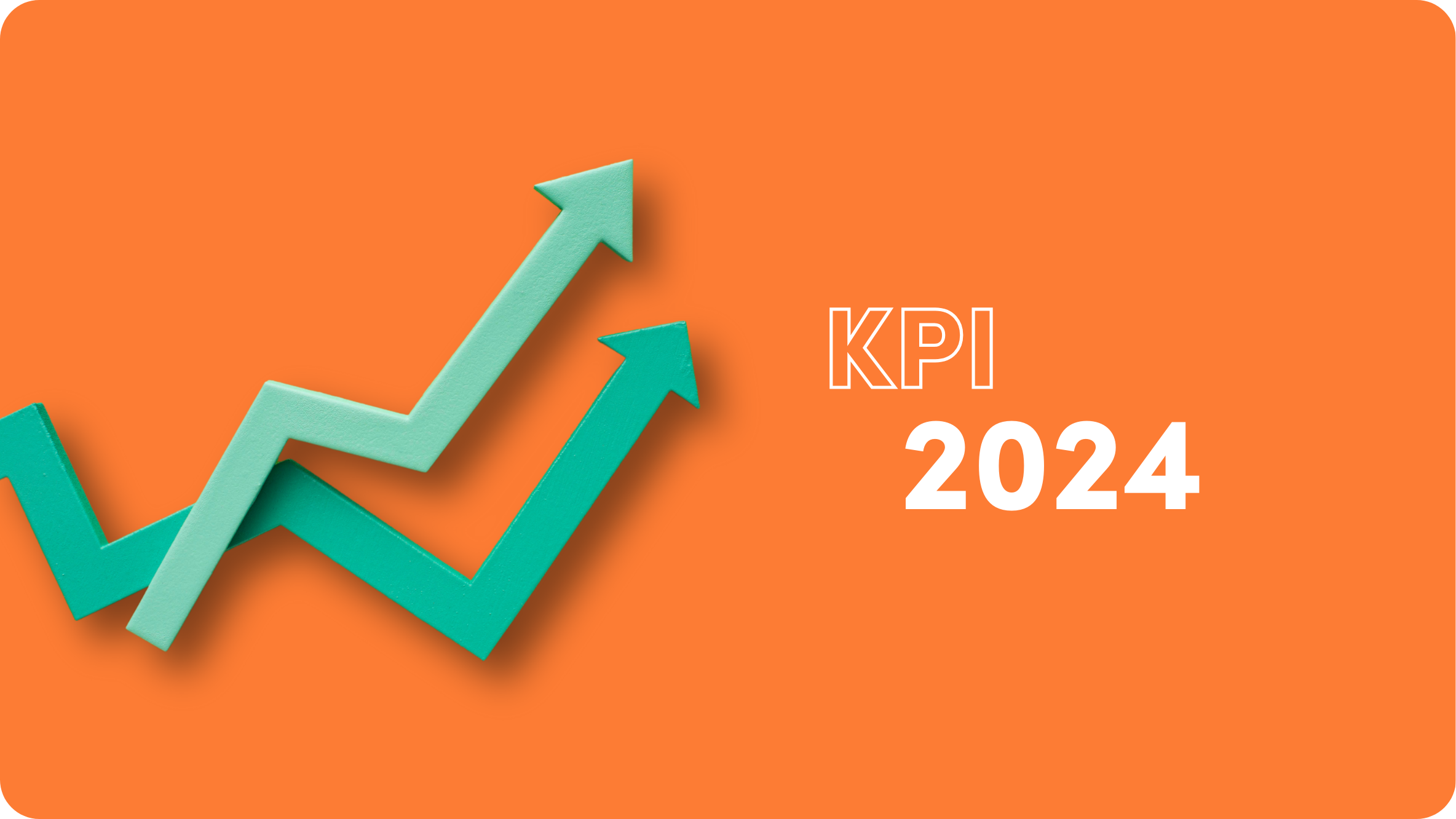Top Advertising KPIs to Strive For in 2024

Did you know that the Merriam-Webster word of the year for 2023 was “authentic”?
It’s no surprise then that authentic advertising is one of the key trends in 2024.
Measuring the impact of authentic, value-driven advertising is harder to measure than simple clicks or scrolls.
That’s why attention metrics are gaining a foothold as an important advertising KPI – finally, there is a way to measure the genuine engagement of an ad campaign and not just viewability. How much attention is the ad receiving from real viewers? How well are they engaging with the message or experience of the ad?
Let’s take a closer look at the top advertising KPIs to monitor in 2024, and the newest kid on the block, attention metrics.
The Top Advertising KPIs for the Year
Attention Metrics
Traditional metrics like viewability are not enough anymore, especially as advertisers try hard to build meaningful connections with their audiences. The spotlight is now on attention metrics, a new KPI that is recognized by the Interactive Advertising Bureau (IAB) as a powerful tool for brands to align their campaigns with key business outcomes.
Attention metrics gauge the engagement and focus of individual users on a digital ad, going beyond impressions to offer insights into the quality of engagement. It’s about how the individual paid attention to the ad, rather than simply whether they saw it.
Outbrain is already using attention metrics as part of the digital advertising toolbox. Partnering with Adelaide, Outbrain Onyx ad placements receive an Attention Unit score (AU), which indicates the probability of attention among the viewing audience.
The proof is indeed in the pudding: Toyota ran a pre-roll video ad campaign with in-article placements on premium publisher sites. The Outbrain Onyx campaign received an impressive attention score, resulting in a 41% uplift in attention compared to benchmarks.
MQL to SQL Conversion Rate
Long story short, this metric captures the transition of one kind of lead to another. MQL or ‘marketing qualified leads’ are individuals interested in your offering, but lacking intent to buy. On the other hand, SQL or ‘sales qualified leads’ are both interested and intending to buy, making them generally more valuable when your end goal is revenue.
The calculation for MQL to SQL is simple: just divide the MQL number by the SQL number, then multiply by a hundred. This will give you a clean-cut percentage number to assess against your goals. Crucially, this metric tells you how healthy your pipeline is (the higher the better). If your ads are reaching high-value potential leads that are translating into conversions once they reach your sales team, then your ads are telling your customers the right story. If not, it’s worth looking into targeting a more specific audience or addressing any discrepancies between what is advertised and what customers actually encounter when they reach out.
Cost Per Lead (CPL)
Cost per Lead is an important metric that lets you know how much money your business spends to acquire new leads. From a marketing standpoint, it lets you know how effective your campaigns are in targeting customers that will translate into leads for your sales team. Importantly, this metric measures leads, not acquisitions or conversions. In other words, CPL lets you know how much it costs to get your target customer in the door, not how much it costs to convert them.
A high CPL is not necessarily a bad thing, which is why it’s important to measure this metric against your customer acquisition cost (CAC). High-quality leads may cost a lot to get in the door but then convert fairly easily following a meeting with the sales team, resulting in a lower overall CAC.
ROAS (Return On Ad Spend)
Simply put, your Return on Ad Spend (or ROAS) lets you know how many dollars your company gets back for every dollar spent on advertising.
Businesses investing in marketing have a primary goal of increased revenue. In light of that, ROAS is one of the most valuable KPIs to track because it is a direct measurement of how well your marketing investments are generating revenue. If an ad campaign generated $20,000 in revenue while spending $8,000, the ROAS would be 250%. That’s two-and-a-half times the dollars going out, coming in.
Utilized well, this is a broad-spectrum metric that lets advertisers know their efforts are paying off. Take, for example, AdRizer’s use of a suite of metrics via Outbrain to deliver 180% ROAS for the organic skin brand, Ogee.
Retention Rate
Most of the time, retaining existing customers is much more cost-effective than attaining new ones. Retention tends to generate more revenue over time than standard lead acquisition practices. The KPI of retention rate informs marketers how well their campaigns are attracting loyal returning customers.
A high retention rate can translate into increased lifetime value, indicating that customers are not only willing to make repeat purchases, but are also willing to spend more. Low retention rates may indicate fundamental issues within the business, but they can also indicate that campaigns are not being targeted to the most effective customers (in other words, the ones most likely to come back after a single purchase).
To calculate retention rate, simply divide the number of customers at the end of a certain period, by the number of customers the period began with, then multiply the number by a hundred. For example, if a company began the financial year with 100 customers and ended it with 120 customers, this would equate to a retention rate of 20%. Generally speaking, this is not considered a high retention rate.
Engagement
Thanks to the shifts in online experiences, engagement is steadily becoming more important as a KPI. While the concept of measuring engagement might seem intangible at first, this metric actually enables advertisers to measure how well their audiences are connecting to the campaigns they create.
Engagement is ultimately measured by which actions a user takes when they find an ad out in the digital wilderness. More significant brand interactions have higher value, such as users spending longer watching a video ad or choosing to swipe to the end of a carousel.
For example, Outbrain Brand Studio pushed the boundaries for luxury auto brand Audi, driving over 4% engagement rate via interactive video ad experiences.
With engagement such a powerful metric among digitally savvy customers, it is quickly snowballing in importance to advertisers. Outbrain’s Engagement Bid Strategy leverages dynamic user behavior and intent data to help brands deliver their messaging in a way that resonates beyond a quick glance.
CPA (Cost Per Action)
Cost per Action (CPA) is a pricing model used in online advertising, where advertisers pay only when a specific action is taken by the user, such as filling out a form, signing up for a newsletter, downloading an app, or making a purchase.
Unlike Cost per Click (CPC) or Cost per Impression (CPM), where advertisers pay for each click or impression regardless of whether it leads to a conversion, CPA is a performance-based model where advertisers only pay when a desired action is completed. This means that the advertiser assumes less risk, as they only pay when they get a measurable outcome that is aligned with their campaign objectives.
CPA can be an effective way for advertisers to optimize their ad spend and ensure they are only paying for results that meet their business goals. For example, Direct-to-Consumer brand Brooklinen used Outbrain’s Lookalike audiences to advertise on the open web and enjoyed results that outperformed most other platforms and campaigns, with a 50% lower CPA to cap it all off.
CLV (Customer Lifetime Value)
The final advertising KPI to look out for in 2024 is CLV, a metric we briefly touched on earlier. CLV stands for “Customer Lifetime Value”, and refers to the total amount a given customer is expected to spend on a business’s offerings over the duration of their relationship with the business. Ideally, customers will trend toward loyalty, returning over and over again across a long lifetime to purchase what the business has to offer.
Using dynamic factors like the customer’s purchase history, average order value (AOV), and retention rate, businesses can calculate the likelihood of said customer doing business with them for years to come.
This is an essential metric for understanding a customer’s long-term value, helping inform more widespread decisions about how much time, energy, and money to invest in acquiring leads similar to them. Beyond that, CLV is also a measure of the business’s overall health, with a higher CLV indicating excellent business performance that continually draws customers back into the funnel.
Fine Data, Big Picture
As with all advertising KPIs, it’s important to understand them as part of a broader picture rather than in isolation. Knowing how to use the top KPIs listed above is essential in a shifting digital landscape, and will help ensure strong returns for your advertising activities in 2024 and beyond.












